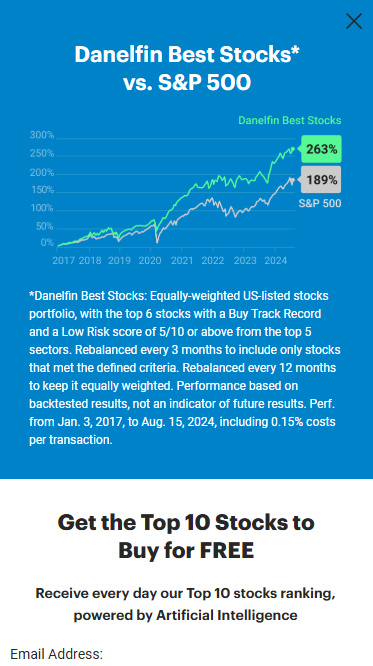It is essential to examine the AI and Machine Learning (ML) models that are used by trading and stock prediction platforms. This ensures that they offer accurate, reliable and actionable insights. Models that are overhyped or poorly constructed can lead flawed predictions, or even financial losses. Here are the top ten guidelines to evaluate the AI/ML models of these platforms:
1. Understand the Model's Purpose and approach
Clear goal: Determine whether the model was designed to be used for trading in the short term, long-term investing, sentiment analysis or risk management.
Algorithm transparency: See if the platform provides information on the kinds of algorithms utilized (e.g. regression and neural networks, decision trees or reinforcement learning).
Customization - See whether you are able to modify the model to suit your investment strategy and risk tolerance.
2. Evaluate the model's performance using through metrics
Accuracy. Check out the model's ability to predict, but don't rely on it alone, as this can be false.
Accuracy and recall: Examine whether the model is able to identify real positives (e.g. accurately forecasted price movements) and eliminates false positives.
Risk-adjusted return: Examine if the model's predictions yield profitable trades following accounting for the risk (e.g., Sharpe ratio, Sortino ratio).
3. Check the model's performance by backtesting it
Historical performance: Backtest the model with historical data to determine how it would have been performing in previous market conditions.
Testing using data that isn't the sample: This is crucial to prevent overfitting.
Scenario analysis: Test the model's performance under different market conditions (e.g., bear markets, bull markets high volatility).
4. Make sure you check for overfitting
Overfitting signals: Look out for models that perform extraordinarily well with data training, but not so well on data unseen.
Regularization Techniques: Check to see if the platform employs techniques such as dropout or L1/L2 regularization to prevent overfitting.
Cross-validation is a must: the platform should make use of cross-validation when evaluating the generalizability of the model.
5. Assess Feature Engineering
Relevant features: Ensure that the model includes important features (e.g. price, volume and technical indicators).
Selection of features: You must make sure that the platform selects features with statistical importance and avoid redundant or unneeded data.
Dynamic feature updates: Verify whether the model is able to adapt to changes in features or market conditions over time.
6. Evaluate Model Explainability
Interpretability: Ensure that the model provides clear explanations for its predictions (e.g. SHAP values, feature importance).
Black-box models cannot be explained: Be wary of platforms that use complex models like deep neural networks.
User-friendly insights: Find out whether the platform provides useful insight to traders in a manner that they understand.
7. Examining the Model Adaptability
Market conditions change - Check that the model can be adapted to changing market conditions.
Examine if your system is updating its model regularly with new information. This will increase the performance.
Feedback loops: Ensure that the platform is able to incorporate real-world feedback and user feedback to improve the design.
8. Be sure to look for Bias or Fairness
Data bias: Ensure that the training data is accurate to the market and is free of biases (e.g., overrepresentation of certain segments or timeframes).
Model bias - See the platform you use actively monitors the presence of biases within the model predictions.
Fairness - Make sure that the model is not biased in favor of or against particular sector or stocks.
9. Evaluate the efficiency of computation
Speed: Test whether the model produces predictions in real time with the least latency.
Scalability: Check whether the platform has the capacity to handle large amounts of data with multiple users, and without performance degradation.
Resource usage: Verify that the model is optimized to make efficient use of computational resources (e.g. GPU/TPU use).
Review Transparency and Accountability
Model documentation. Make sure you have a thorough description of the model's design.
Third-party auditors: Examine to determine if the model has been subject to an audit by an independent party or has been validated by a third-party.
Verify that the platform is fitted with mechanisms to detect model errors or failures.
Bonus Tips
User reviews and case study: Use user feedback and case studies to assess the actual performance of the model.
Trial period: Test the model free of charge to determine the accuracy of it and how simple it is to use.
Support for customers: Ensure that the platform provides robust customer support to help resolve any technical or product-related issues.
Following these tips can help you assess the AI models and ML models that are available on stock prediction platforms. You will be able determine if they are transparent and reliable. They must also be aligned with your trading goals. View the recommended ai investing app info for website advice including ai investment app, incite, ai for stock predictions, stock ai, options ai, ai trading tools, ai for investing, using ai to trade stocks, ai for trading, best ai trading software and more.

Top 10 Tips For Assessing The Regulatory Compliance Of AI stock Analysing Trading Platforms
The regulatory compliance of trading platforms that employ AI to forecast or analyze the price of stocks is a significant element. Compliance is essential as it guarantees that the platform is in compliance with the laws and regulations. Also, it protects user's data. Here are the top ten tips for assessing regulatory compliance.
1. Verify registration and licensing
Regulators: Make sure your platform is registered with and licensed by appropriate financial regulatory bodies (e.g., SEC in the U.S., FCA in the UK, ASIC in Australia).
Verify broker partnerships. If the platform integrates brokers, be sure that they're licensed and regulated.
Public Records: Visit the official website of your regulatory body to find out information about the status of your registration, past violations and other relevant information.
2. Assessment of the Data Privacy Compliance
GDPR: Ensure that your platform adheres to the General Data Protection Regulation.
CCPA: California Consumer Privacy Act compliance is mandatory for users.
Data handling policies: Review the privacy policies for data on the platform to determine what it says about data collection, storage, and sharing.
3. Evaluation of Anti-Money-Laundering Measures
AML policies - Ensure that the platform's AML policies are effective and effective in detecting, prevent and detect money laundering.
KYC procedures - Ensure that the platform adheres to Know Your Customer procedures for authenticating user identities.
Transparency monitoring Check if your platform monitors transactions for suspicious activities and informs authorities.
4. Verify that you are in compliance with Trading Regulations
Market manipulation: Ensure that your platform has safeguards in place to stop market manipulation, such as fake trading and wash trading.
Order types: Verify if the platform complies with the regulations for order types (e.g. No illegal stop-loss hunting).
Best execution: Check if the platform is in line with best execution practices, ensuring transactions are executed at the highest price available.
5. Review the level of Cybersecurity Compliance
Data encryption. Make sure your platform has encryption to protect user data both in rest.
Incident response: Verify that the platform has a plan for incident response in place for cyber-attacks or data breaches.
Certifications: Make sure the platform is certified for cybersecurity.
6. Transparency & Disclosure:
Fee disclosure. Make sure that all charges and fees are clearly stated, as well as any hidden charges or fees.
Risk disclosure: Make sure the platform has disclosed all risks, especially if you are using high-risk strategies, or trading using leverage.
Performance reporting: Determine whether the platform is clear and accurate reports on performance on its AI models.
7. Verify the compliance to International Regulations
Cross-border trading If you plan to conduct international trade, ensure that your platform is legal in all countries.
Tax reporting: Determine the platform's tools or reports for users to comply with tax regulations.
Conformity with international sanctions: Make sure the platform strictly adheres to these rules and does not allow transactions between countries or entities that are banned.
8. Examine Audit Trails and Record-Keeping
Records of transactions: The platform should keep detailed records of the transactions that are used for auditor and regulatory reasons.
Records of activity by users: Determine whether the platform records users' activities, such as logins or transactions as well as modifications to account settings.
Audit readiness: Make sure the platform has all the necessary documentation and logs for a regulatory review.
9. Make sure you are in compliance with AI-specific Regulations
Algorithmic rules for trading: If the platform permits algorithmic trading, it must be in compliance with European regulations, such as MiFID II and U.S. Reg SCI.
Fairness and bias Find out if the platform mitigates or checks its AI models for ethical and fair trading.
Explainability: Some regulations require that platforms provide explanations to AI-driven predictions or choices.
Review User Feedback and Regulatory History
User reviews: Study reviews from users to assess the reputation of the platform's regulator conformity.
Regulatory history - Check to determine if the website has been convicted of any previous penalties or violations of regulations.
Third-party Audits: Verify that the platform is subject to third-party reviews to ensure the platform is in compliance with all regulations.
Bonus Tips:
Legal consultation: Discuss with a legal expert about the platform's conformity to relevant regulations.
Trial period. You can use the trial or demo version of the platform to test its compliance features.
Customer support: Ensure that the platform has support for compliance-related queries or problems.
If you follow these guidelines, you can effectively assess the compliance with regulations of AI platforms for analyzing and predicting stocks and ensure that you select one that adheres to legal frameworks and protects your interests. Compliance is important since it not only reduces the risk of legal liability, but also builds trust and confidence in the platform. Read the best best AI stocks tips for website info including ai share trading, AI stock trader, best ai penny stocks, stock trading ai, free AI stock picker, AI stock predictions, AI stock prediction, stocks ai, stock predictor, AI stock prediction and more.
